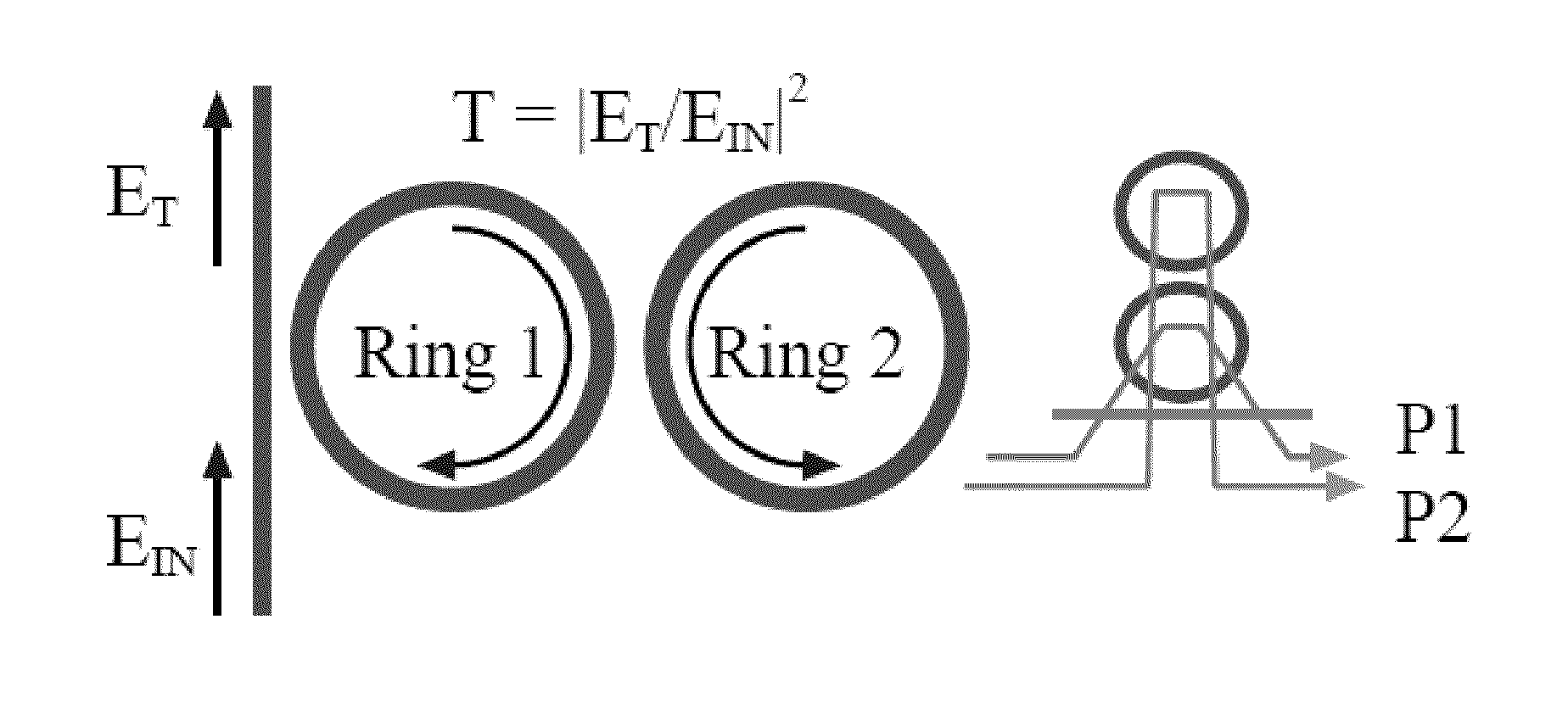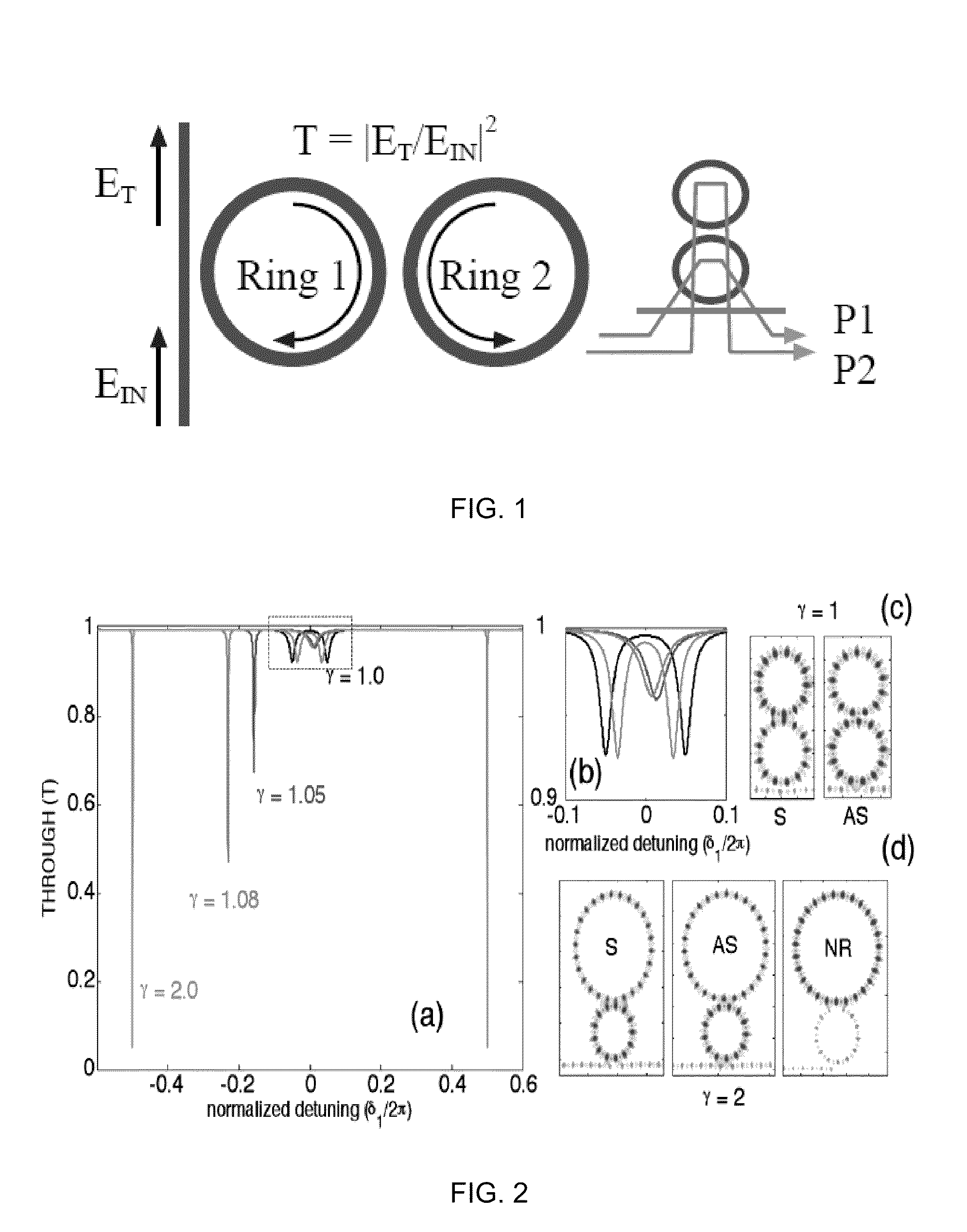Two-ring optical buffer
a buffer and optical technology, applied in the field of two-ring optical buffers, can solve the problems of large delay, severe signal distortion, and the crow with n=100 only achieved undistorted buffering for one bi
- Summary
- Abstract
- Description
- Claims
- Application Information
AI Technical Summary
Benefits of technology
Problems solved by technology
Method used
Image
Examples
Embodiment Construction
[0021]FIG. 1 shows a schematic representation of a two-ring, one-waveguide buffer with two mutually coupled rings being a first ring R1 and a second ring R2. First ring R1 is coupled to the waveguide bus and the second ring R2 is only coupled to the first ring R1. The second ring R2 is not coupled to a waveguide. The excited optical pathways are shown in the right inset.
[0022]The optical buffer of FIGS. 1 and 3 has a ratio (γ), of the circumferential length of the second ring R2 to the first ring R1 of γ=2m, where m is an integer. Also, the ratio of the resonance splitting over the resonance broadening (Ω / Γ) should be approximately 0.6. That is, Ω / Γ˜0.6. Furthermore, the buffer should work in the strong coupling region. The splitting (Ω) is controlled by the coupling between the two rings R1 and R2. The broadening (Γ) is controlled by the coupling of the first ring R1 to the waveguide. Hence, there is an independent control of both parameters (Ω and Γ). Each of the splitting and the...
PUM
 Login to View More
Login to View More Abstract
Description
Claims
Application Information
 Login to View More
Login to View More - R&D
- Intellectual Property
- Life Sciences
- Materials
- Tech Scout
- Unparalleled Data Quality
- Higher Quality Content
- 60% Fewer Hallucinations
Browse by: Latest US Patents, China's latest patents, Technical Efficacy Thesaurus, Application Domain, Technology Topic, Popular Technical Reports.
© 2025 PatSnap. All rights reserved.Legal|Privacy policy|Modern Slavery Act Transparency Statement|Sitemap|About US| Contact US: help@patsnap.com



